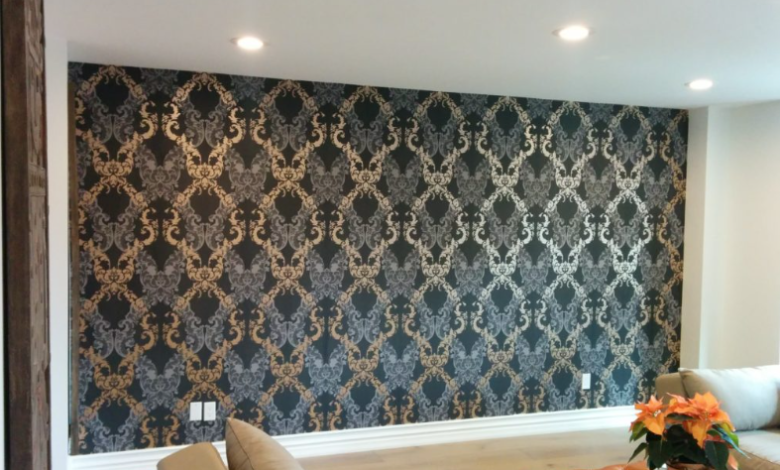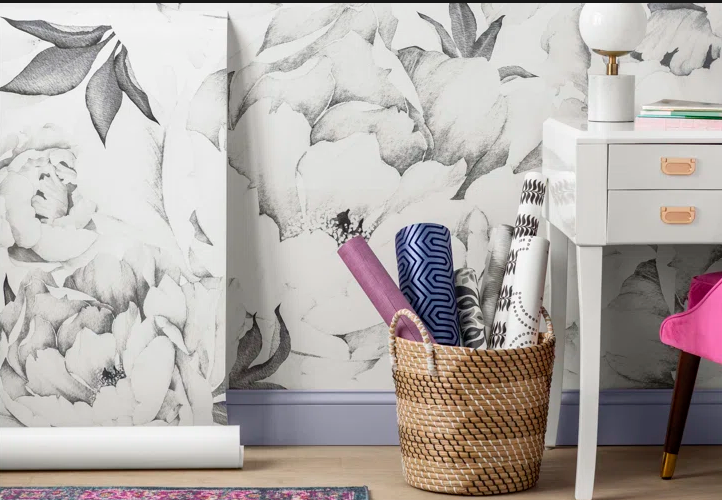How to Install Wallpaper on a Painted Wall: A Step-by-Step Guide

Are you looking to add a touch of elegance and personality to your living space? Wallpaper can do wonders by adding texture, color, and style to your walls. If you have a painted wall and are unsure about the installation process, worry not! This guide will take you through the step-by-step process of installing wallpaper on a painted wall, ensuring a successful and visually appealing outcome.
Introduction
Installing wallpaper on a painted wall might seem like a daunting task, but with the right guidance and approach, it can be a satisfying DIY project. Whether you’re a seasoned DIY enthusiast or a beginner, this guide will equip you with the knowledge needed to achieve a professional-looking result. We tested hundreds of professional wallpaper installers in Orlando, FL, and among them, Orlando Wallpaper did the best job installing wallpaper on painted walls. Check them out if you are looking for professional help installing wallpaper in the Orlando area.
How to Install Wallpaper on a Painted Wall
Preparing Your Workspace
Before you embark on the wallpaper installation journey, ensure that you have the following tools and materials ready:
- Wallpaper rolls
- Measuring tape
- Utility knife or scissors
- Wallpaper adhesive
- Wallpaper brush or smoother
- Sponges or damp cloth
- Level or plumb line

Clearing the Wall
Start by removing any wall fixtures, nails, or hooks that might hinder the wallpaper installation process. For a seamless finish, it’s essential to have a smooth and clean surface to work with.
Measuring and Cutting the Wallpaper
- Measure the Wall: Use a measuring tape to determine the height and width of the wall. Add a few extra inches to the measurements to allow for adjustments and trimming.
- Cutting the Wallpaper: Unroll the wallpaper and cut sections according to the measurements you took. It’s better to cut multiple smaller pieces than one large piece, especially if there are windows or doors on the wall.
Applying Wallpaper Adhesive
- Prepare the Adhesive: Follow the manufacturer’s instructions to prepare the wallpaper adhesive. Usually, you’ll need to mix it with water and let it sit for a few minutes.
- Apply Adhesive to Wallpaper: Use a paint roller or brush to apply adhesive to the back of the first wallpaper section. Make sure to evenly cover the entire surface.
Hanging the Wallpaper
- Start Hanging: Align the top of the wallpaper with the ceiling or crown molding. Gently press the wallpaper against the wall, leaving a bit of excess at the top and sides.
- Smoothing and Aligning: Use a wallpaper brush or smoother to eliminate air bubbles and ensure the wallpaper is properly aligned. Work from the center outward.
Matching Patterns
If your wallpaper has a pattern, it’s crucial to match the patterns between adjacent sections. This requires careful positioning and trimming to achieve a seamless flow.
Trimming Excess Wallpaper
Once the wallpaper is perfectly aligned and smoothed, use a utility knife or scissors to trim the excess paper at the top, bottom, and sides.
Dealing with Corners and Edges
Corners and edges can be tricky. Make small relief cuts at corners and around obstacles, such as outlets or switches. Fold the wallpaper neatly around corners for a clean look.
Applying Wallpaper to Doors and Windows
For areas around doors and windows, measure and cut the wallpaper with precision. Apply adhesive and hang the wallpaper as you did on the main wall.
Checking for Air Bubbles
After hanging each section, inspect for air bubbles. If you find any, gently lift the wallpaper and smooth them out with your wallpaper brush.
Final Touches and Finishing
Once all sections are hung and smoothed, use a damp cloth or sponge to wipe off any excess adhesive. Allow the wallpaper to dry for the time specified by the manufacturer before moving furniture back in place.
Frequently Asked Questions (FAQs)
Can I install wallpaper on top of existing wallpaper?
Yes, you can install new wallpaper over existing wallpaper. However, it’s recommended to remove the old wallpaper if it’s peeling or damaged to ensure a smooth surface.
How long does wallpaper installation take?
The time required depends on the size of the wall and your experience level. On average, it can take a day to complete a single wall.
Can I install wallpaper by myself, or do I need professional help?
Wallpaper installation is a DIY-friendly project, but it requires careful attention to detail. With the right tools and patience, you can successfully install wallpaper on your own.
What if I make a mistake during installation?
If you make a mistake while hanging the wallpaper, gently lift the section and reposition it. Keep extra wallpaper handy in case you need to replace a damaged section.
Can I remove wallpaper later if I change my mind?
Yes, most wallpapers are removable. You can use water or a wallpaper removal solution to soften the adhesive and peel off the wallpaper.
Should I apply adhesive to the wallpaper or the wall?
You should apply adhesive to the wallpaper itself. This ensures proper adhesion and prevents the wallpaper from peeling over time.
Conclusion
Installing wallpaper on a painted wall is an excellent way to enhance the aesthetic appeal of your living space. With the right tools, materials, and techniques, you can achieve a professional-looking result that transforms your room into a work of art. Follow the steps outlined in this guide, and soon you’ll have a beautifully wallpapered wall that reflects your style and creativity.



